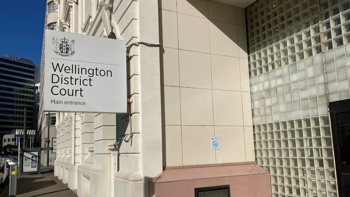
The next Minister of Education has one job at the top of her list. Get kids back into the classroom in front of their teachers. Unless New Zealand tackles record poor attendance and truancy levels, lost education time is a ticking timebomb for students, families, employers and the wider economy.
Election campaign education policies so far have covered many topics from cell phone bans, school choice and reform, teachers’ pay, curriculum content, free school lunches and other policy, but new ideas are moot if students aren’t turning up to class.
Those who run businesses and other organisations know that successful management often boils down to identifying a small number of variables that make a difference to performance or “move the dial”.
It’s the same with any Ministerial portfolio. Successful Ministers don’t try and boil the ocean i.e. do everything at once; they focus on a few core factors knowing that if they can improve performance of those there are positive flow on effects in other areas. In the health portfolio, a good example might be treating emergency department waiting times as a performance indicator for overall health system effectiveness.
In education measuring and improving New Zealand’s woeful school attendance levels must be in the top three levers to improve performance, alongside teacher quality and a world-class curriculum.
Truancy or “unjustified absences” as the sector prefers, has been called New Zealand’s “oldest education problem”. Complaints about it have made the papers ever since the 1877 Education Act, when New Zealand made schooling free and compulsory for Pakeha children between the ages of 7 and 13 years and later Māori children in 1894.
Since that time school attendance and truancy regularly flare up as political issues in Parliament and society.
The language has changed over the decades. We no longer hear references to “the truancy evil” or that truancy causes “stunted mental and moral growth” and neither do newspapers publish the court report stories about prosecuted parents.
Concerns about lost education opportunities and the impact on young people remain the same, particularly with the steady decline in school attendance since the 1960s.
Over the years there’s been plenty of data collection and research measuring the rate of truancy. Unfortunately, due to changes to methodologies and evolving societal expectations about what constitutes a justified reason for absence, studies aren’t completely comparable but are still interesting.
In 1966 academics measured truancy in secondary schools at 0.49%, a tiny number presumably because those who didn’t want to be at high school generally left the moment they turned 15.
In 1977 the high school truancy rate was 1.4%. In 1996 research found the truancy rate in secondary schools had jumped to 6.5% triggering major political attention at the time.
Since 2011, data collection methods changed again but there appears to be greater detail and consistency in the last 12 years. Truancy rates for secondary schools started at 4.4% in 2011 and slowly increased for most of the decade. When the truancy rate tanked during 2022 reaching a record of 11.6% in Term 4, there was genuine concern from both government, opposition and educators alike.
Term 4 may have been a rogue wave, but adding in “justified absences”, the reasons for which can vary depending on school policy, the overall rate of absence was 20%. During 2022 an average of 40% of secondary students attended school regularly, defined as achieving 90% or more attendance i.e. up to one week off during a 10 week term.
Last year’s truancy nadir triggered a major response from Minister Tinetti and the government. 84 new attendance officers were promised and $40 million was allocated for new truancy measures. She set targets to increase the number of all school students attending school regularly to 70% in 2024. No targets were set to reduce truancy specifically, but upping the attendance of all will no doubt have a flow on effect of reducing the rate.
Since then, there has been some improvement with the latest figures truancy figures for Term 1 of 2023 being 6.4% with 54% of secondary students attending regularly. It’s a long road, however, to get school engagement back to levels which were the norm pre-Covid and for other generations.
What more can be done post-election? First the new Minister of Education will need to make school attendance a number one priority and something that she talks about relentlessly with officials, families, principals, boards of trustees and political colleagues. While a Minister controls less than citizens recognise, she is still a powerful influencer in terms of direction and attention an issue receives.
There must be clear political leadership, strong advocacy and further funding to support local school initiatives. This included plain-speaking about why education matters in terms of life prospects and perhaps social marketing campaigns that reach students.
Extra parental penalties and other punitive measures surface as policy ideas from time to time, but they’re a waste of time and a distraction from activities that can make a difference. The state would be better to spend the money on resourcing extra social workers and professionals to work with the families rather than fill up our broken court system with pointless prosecutions completed long after the student has left school.
The Minster should not solely rely on the Ministry of Education to develop solutions from Wellington. The problem is national, but all the solutions will be local. Sure, the next Minister of Education is an important influencer able to pull regulatory and financial levers, but it’s the ideas of local school leaders who know their communities who can make the biggest difference. The only way is to get into communities, inspire boards of trustees and convince Principals to do more, incredibly hard when leaders and schools are already feeling under immense pressure to solve all sorts of other societal problems.
Recently I listened to Waikato education expert Nathan Leith, principal of Berkely Normal Middle School. He spoke on radio about how local principals in his area off their own bat got together to work on reducing truancy and increasing attendance. He spoke pragmatically about “a small percentage of families that maybe do not value education like they should”, about there being the need for simpler systems of recording absences citing over 25 different codes for teachers to navigate when recording a single absence. He reflected that factors like poverty, housing, mental health and other hardships all have an impact on attendance, a reminder to all of us that there are no quick fixes just hard work ahead for New Zealand society. Local leaders like him collaborating with other educators are the key to engaging families who currently struggle to prioritise education.
Increasing school attendance and reducing truancy in all our schools is a major task which needs everyone in the education network to work together. Trustees, teachers, principals, education officials, students, parents and families play a key role, but at the top of the leadership tree is the next Minister of Education.
The shocking attendance figures and truancy rates created a strong platform for opposition criticism, so there’s a high expectation of a strong follow through should Erica Stanford become Minister, and equally for a strong continuation of her truancy strategy if it’s Jan Tinetti.
Regardless of who becomes Education Minister after the election, encouraging disconnected students back into the classroom is the number one leadership task
Take your Radio, Podcasts and Music with you









